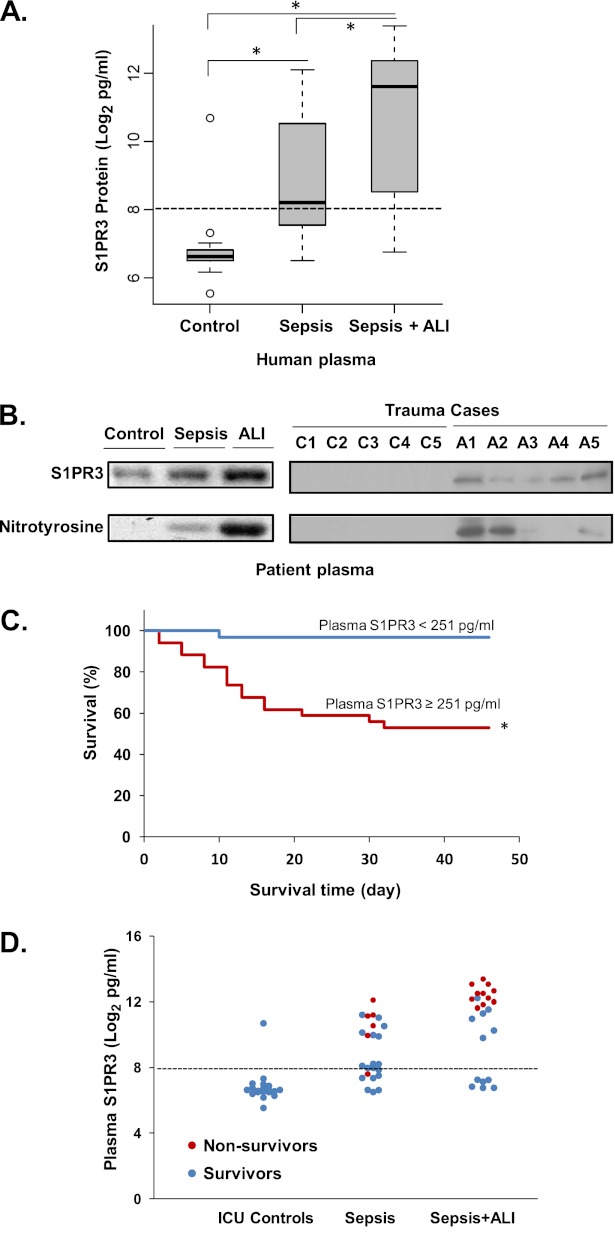Figure 3.
Increased nitrated S1PR3 concentrations in plasma from sepsis-induced and trauma-induced ALI cases confer increased risk of sepsis/ALI mortality. (A) S1PR3 protein concentrations in human plasma from patients with sepsis (n = 24), sepsis-induced ALI cases (n = 23), and intensive care unit (ICU) control subjects (n = 19) were determined using murine and rabbit anti-human S1PR3 with ELISA. Plasma S1PR3 concentrations are indicated as log2 pg/ml, and the median concentration is 28 (251 pg/ml), indicated as a dotted line (*P < 0.05). (B) Total S1PR3 and tyrosine-nitrated S1PR3 concentrations in plasma from patients with sepsis (n = 3), sepsis-induced ALI cases (n = 3), control subjects (n = 3), patients with trauma-induced ALI (n = 5), and trauma cases without ALI (n = 5) were detected by immunoprecipitation with anti-S1PR3 and blotting with anti-nitrotyrosine antibodies. (C) Kaplan-Meier plot shows the survival rate of ICU patients. The survival rate of ICU patients (including ICU controls, sepsis only, and sepsis-induced ALI) with high S1PR3 concentrations in plasma (≥ 251 pg/ml) was compared with that of patients with low S1PR3 concentrations (< 251 pg/ml). *P < 0.01, according to log-rank test. (D) Comparison of plasma S1PR3 protein concentrations in survival cases (blue dots) and nonsurvival cases (red dots) in ICU control, sepsis, and sepsis-induced ALI groups.

